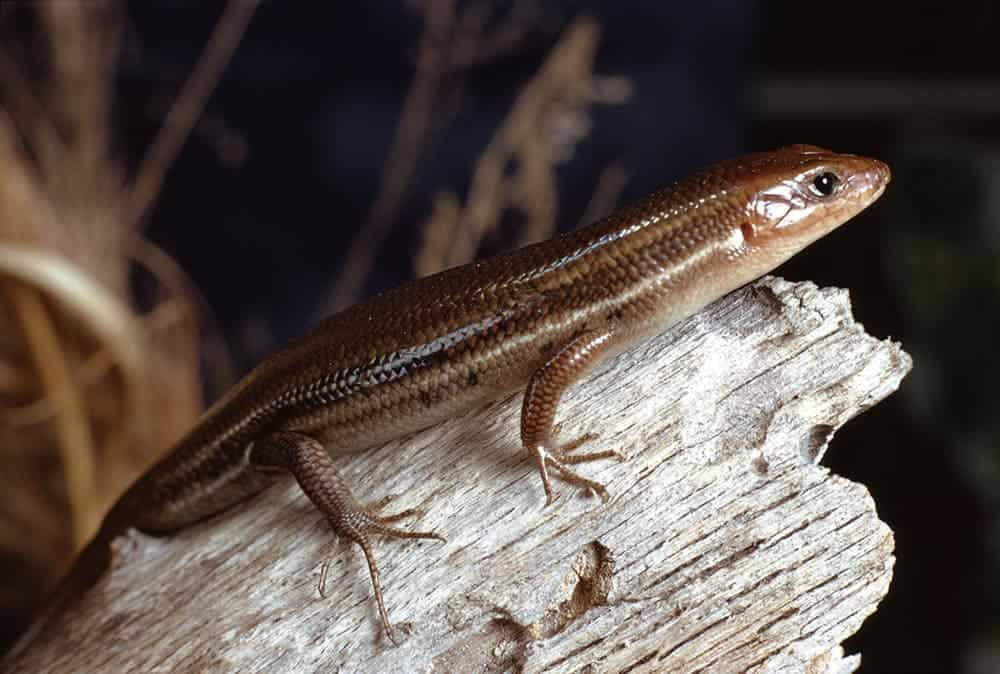Did you know that there are 155 lizard species that can be found in North America? The state of Missouri alone is home to 11 distinct species of lizard. All 11 are completely harmless to humans and habitat alike; there are no known poisonous or invasive lizard species in Missouri. In this article, we will discuss these species in greater detail, outlining each lizard’s average lifespan, adult size, and whether or not they make suitable pets.

The 11 Lizard Species Found in Missouri
The 6 Small Lizards in Missouri
1. Prairie Lizard
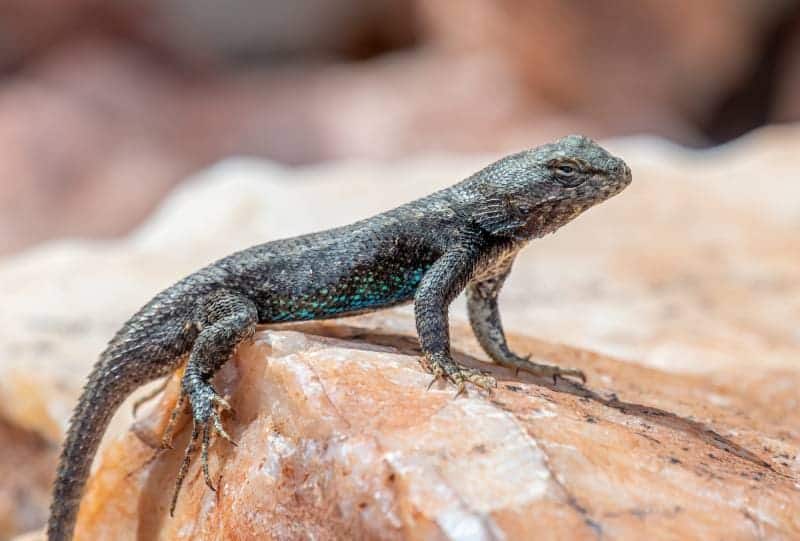
| Species: | Sceloporus consobrinus |
| Longevity: | About 5 years |
| Good to own as a pet?: | Yes |
| Legal to own?: | Yes |
| Adult size: | 5 inches |
| Diet: | Insectivore |
The prairie lizard is a fairly small, brownish-gray lizard with rough scales. These creatures are very adept at climbing and tend to be common in wooded areas and forests in the southern half of the state. As insectivores, prairie lizards eat a large variety of spiders and insects. They are helpful to people with farms and gardens, as they help keep pests at bay.
2. Little Brown Skink
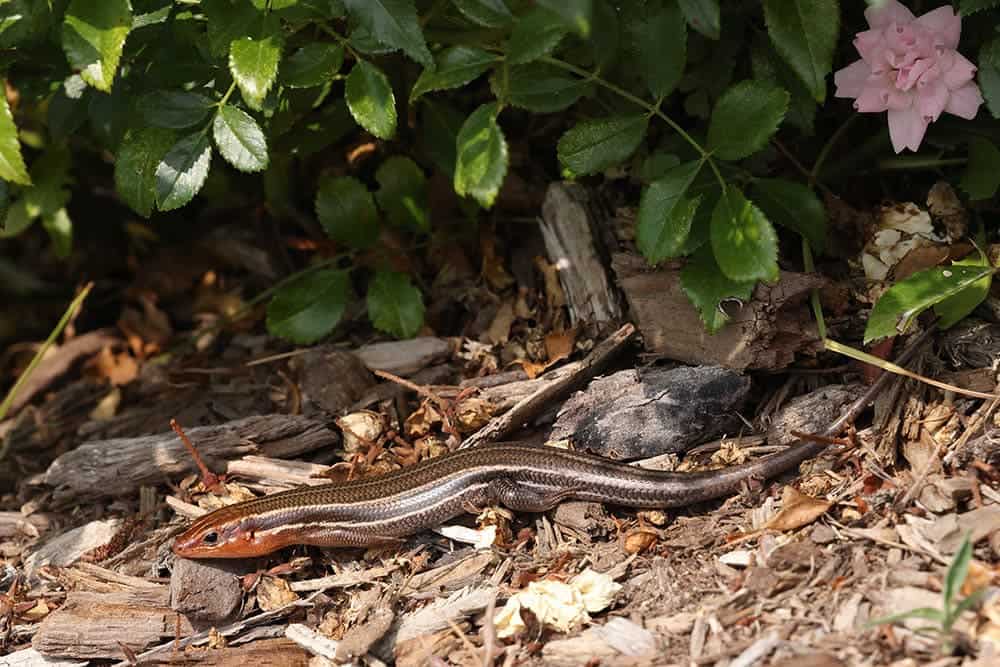
| Species: | Scincella lateralis |
| Longevity: | About 3 years |
| Good to own as a pet?: | Yes |
| Legal to own?: | Yes |
| Adult size: | 4 inches |
| Diet: | Worms and insects |
At just 4 inches long, the little brown skink is the smallest lizard species in the state of Missouri. They can be found throughout the state, with the exception of some areas in the northwestern corner of the state. Unlike other lizard species, they are not climbers and prefer to stay close to the ground. They can be identified by their brown or black bodies with stripes running the length of their bodies.
3. Texas Horned Lizard
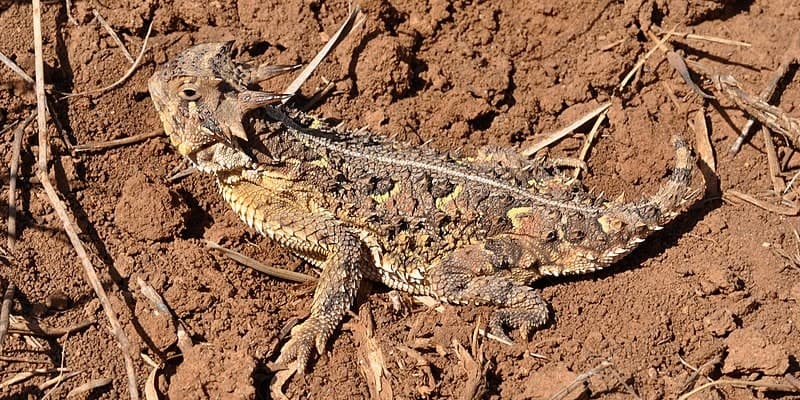
| Species: | Phrynosoma cornutum |
| Longevity: | About 5 years |
| Good to own as a pet?: | No |
| Legal to own?: | No |
| Adult size: | 2 – 4 inches |
| Diet: | Insects and spiders |
The Texas horned lizard is fairly rare in Missouri, but it can sometimes be found in the far southwestern corner of the state that borders Oklahoma. They can be identified by the “horns” jutting out of their heads. Appearance-wise, the Texas horned lizard tends to be all neutral colors: red, brown, tan, and gray. This allows it to camouflage into its surroundings to protect against predators. If the camouflage does not work, these lizards will puff themselves up to look too big to eat. If it still finds itself a target, the Texas horned lizard can actually shoot blood from its eyes to discourage predators. Unlike many, hardier species on this list, this lizard is difficult to keep in captivity because it requires very hot temperatures and needs to eat a fairly specialized diet. Although they eat spiders and other insects, the Texas horned lizard primarily feeds on ants.
4. Coal Skink

| Species: | Plestiodon anthracinus |
| Longevity: | 5 – 6 years |
| Good to own as a pet?: | Unknown |
| Legal to own?: | Yes |
| Adult size: | 5 – 6 inches |
| Diet: | Insects and spiders |
The coal skink is found in the southern half of the state of Missouri. These dark brown, black, or tan lizards are relatively uncommon, making them a mystery to researchers. They also aren’t particularly common as pets, which makes it hard to say whether they would adapt well to living in captivity. What we do know is that they tend to eat insects and spiders and that their primary predators are birds, snakes, and some small mammals.
5. Five-Lined Skink
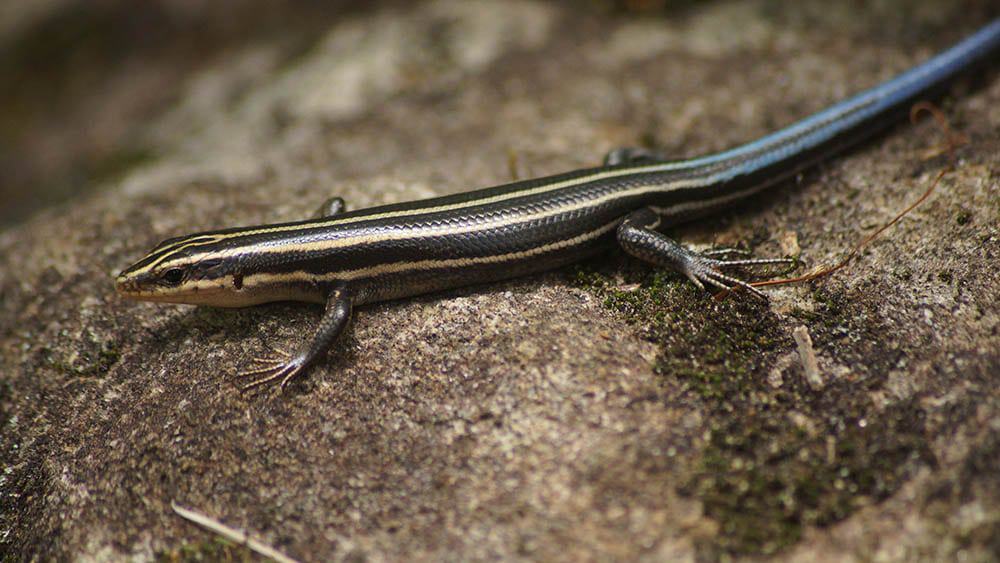
| Species: | Plestiodon fasciatus |
| Longevity: | Up to 6 years |
| Good to own as a pet?: | Yes |
| Legal to own?: | Yes |
| Adult size: | 6.5 inches |
| Diet: | Insects and spiders |
Unlike the coal skink, the five-lined skink is very common throughout the entire state of Missouri. In fact, it is the most common Missourian lizard. These animals like to make their homes in wooded areas and on hillsides. They need some type of shelter such as stumps, rocks, or downed trees. The five-lined skink tends to eat insects and spiders and its main predators are hawks, skunks, opossums, snakes, shrews, moles, and even other lizards.
6. Prairie Skink
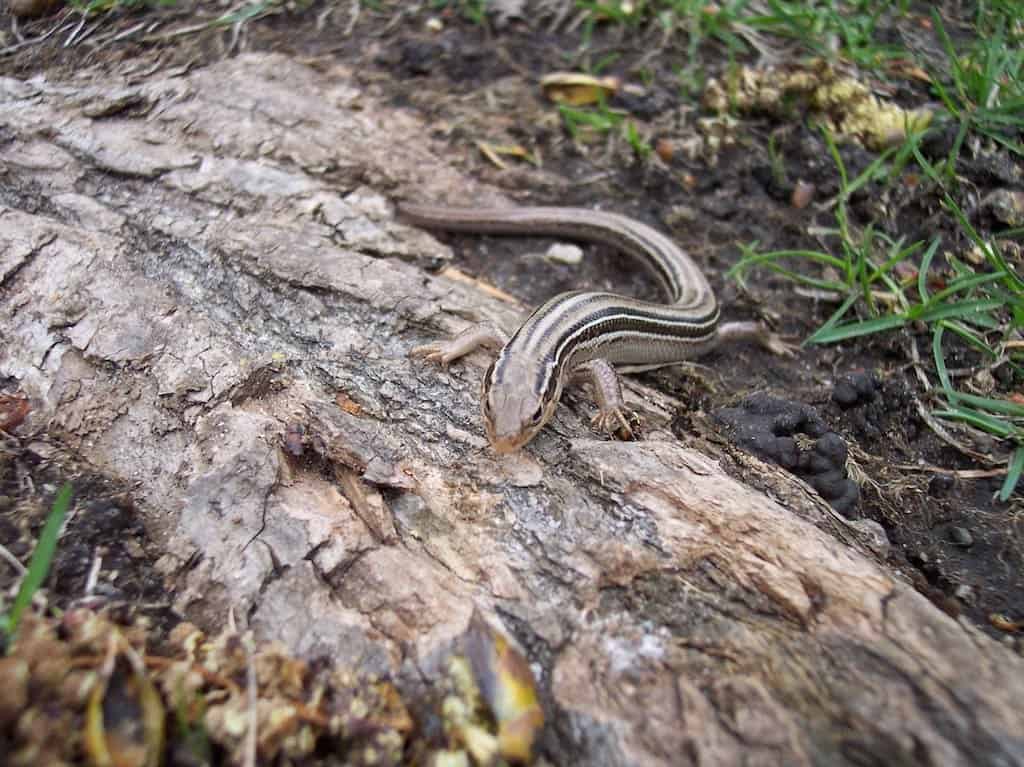
| Species: | Plestiodon septentrionalis |
| Longevity: | Up to 7 years |
| Good to own as a pet?: | No |
| Legal to own?: | Yes |
| Adult size: | 5 – 7 inches |
| Diet: | Insects and spiders |
The prairie skink is a beautifully patterned lizard with a relatively long tail. They are light brown in color with several dark brown or black stripes running down their backs. As they age, males can sometimes develop a reddish color on the sides of their faces. As its name suggests, the prairie skink’s primary habitat is the prairie. Unfortunately, prairies in the United States are under threat, and so are these lizards; they are considered to be a species of conservation concern. For this reason, it is not a good idea to keep these animals as pets.

The 5 Medium-Sized Lizards in Missouri
You won’t find any truly big lizards in Missouri, certainly nothing close to the Gila monster—a southwestern U.S. native that can measure up to 2 feet long and weigh as much as 5 pounds. However, the lizards listed below are still relatively large compared to the common lizard.
7. Western Slender Glass Lizard
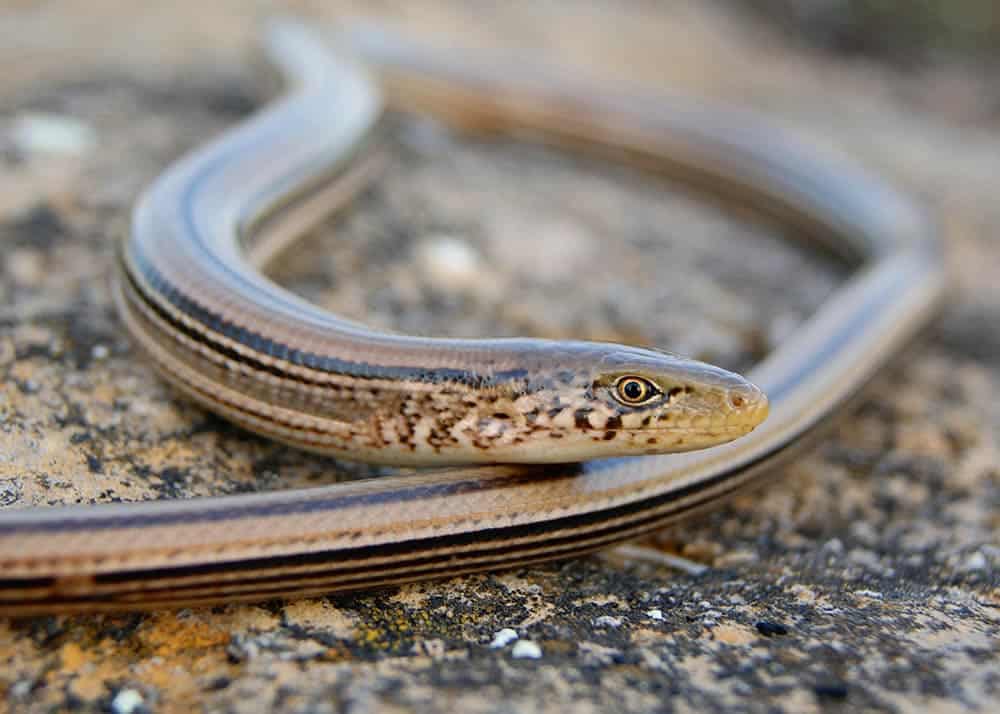
| Species: | Ophisaurus attenuatus |
| Longevity: | 10 years |
| Good to own as a pet?: | Yes |
| Legal to own?: | Yes |
| Adult size: | 22 – 42 inches |
| Diet: | Carnivorous |
The slender glass lizard actually looks more like a snake than a lizard because it doesn’t have legs. However, unlike snakes, they don’t slither. Instead, they get around by pushing off objects on the ground. As a result, it is not uncommon for these creatures to get stuck in the middle of a road, since there is nothing on a flat surface such as a road to push off of. They can be found throughout the state of Missouri.
8. Broad-Headed Skink
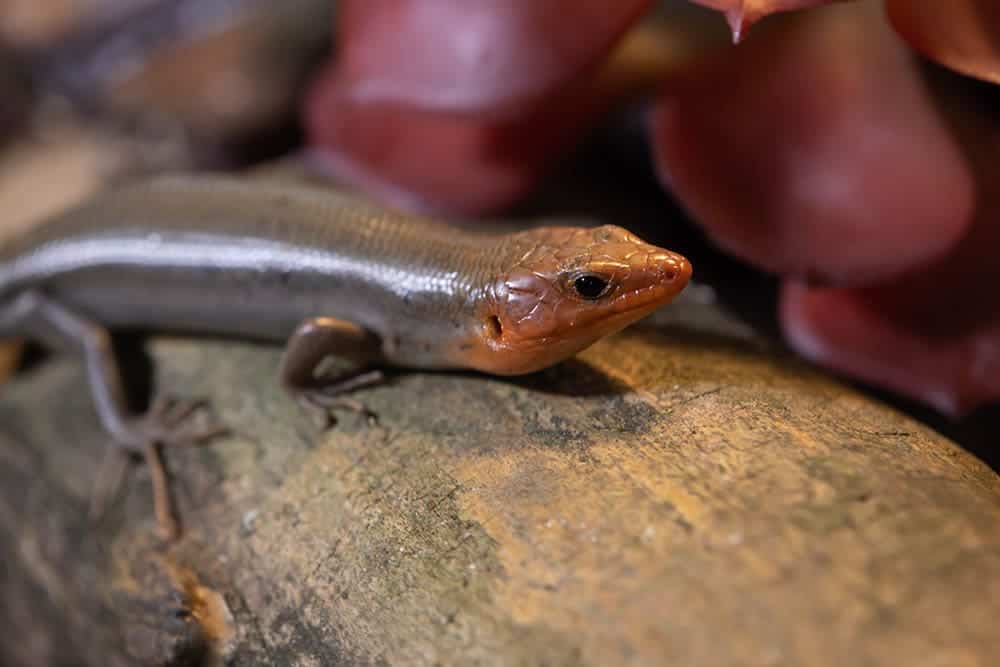
| Species: | Plestiodon laticeps |
| Longevity: | 8 years |
| Good to own as a pet?: | Yes |
| Legal to own?: | Yes |
| Adult size: | 10.5 inches |
| Diet: | Insectivores |
The broad-headed skink is the largest lizard in Missouri that makes its habitat in the forest. It can be identified by its wide, large head. Males have a red-orange colored head, whereas females are brown with blue tails. They tend to be found primarily in the southern part of the state.
9. Great Plains Skink
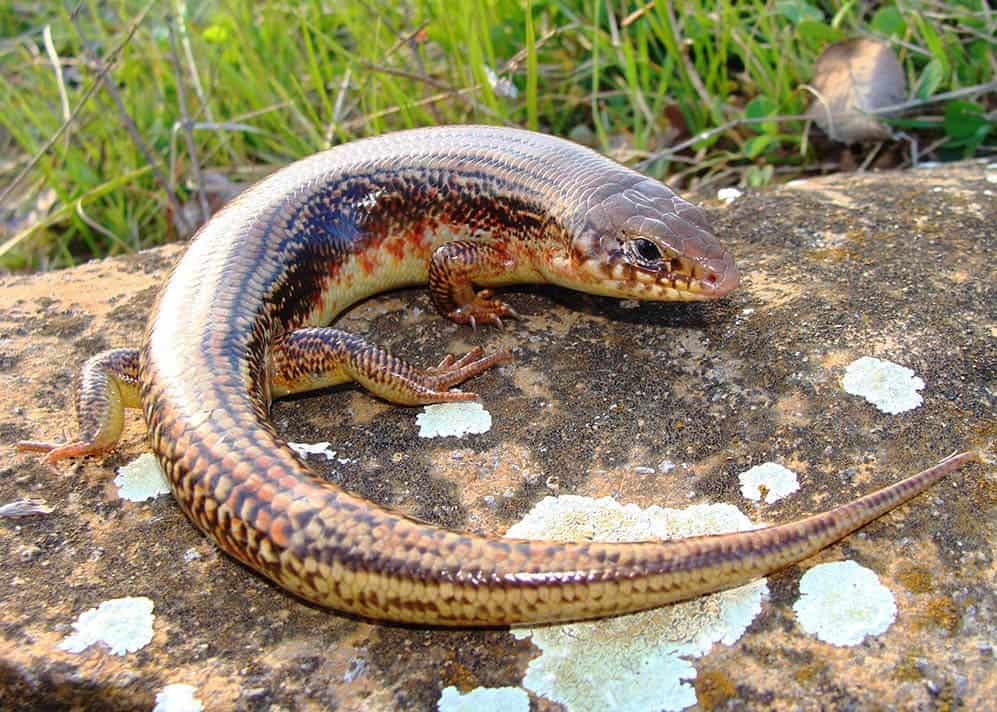
| Species: | Plestiodon obsoletus |
| Longevity: | 8 years |
| Good to own as a pet?: | Yes |
| Legal to own?: | Yes |
| Adult size: | 11 inches |
| Diet: | Insectivores |
The Great Plains skink is primarily found in the westernmost regions of Missouri. It is a fairly large lizard with grayish scales. Though less commonly found in Missouri than other species on this list, you might be able to catch a Great Plains lizard out and about on a hot day between the months of March and October. Keep in mind that while these lizards are not venomous, they are still capable of inflicting a fairly nasty bite. If you buy one of these reptiles to keep as a pet, make sure it is used to you before you attempt to handle it.
10. Eastern Collared Lizard
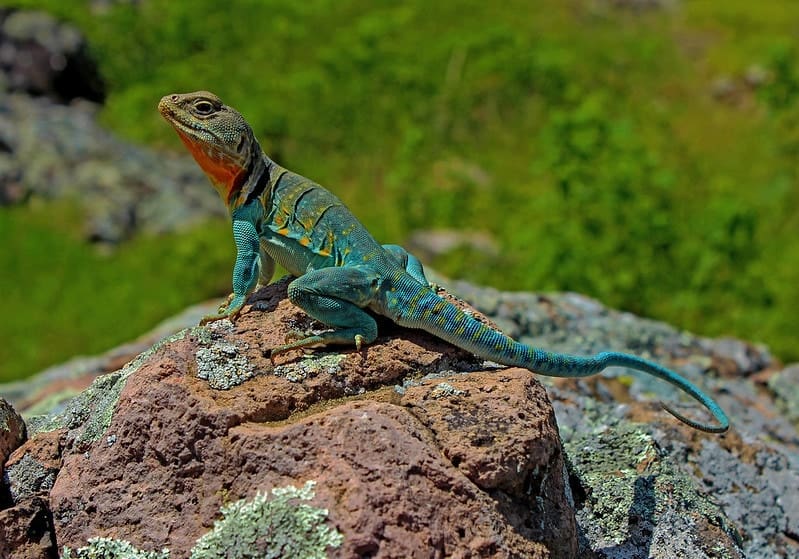
| Species: | Crotaphytus collaris |
| Longevity: | 5 – 8 years |
| Good to own as a pet?: | Yes |
| Legal to own?: | Yes |
| Adult size: | Up to 14 inches |
| Diet: | Insects, spiders, other lizards, small snakes |
The eastern collared lizard is a colorful reptile with yellow, green, blue, or tan scales. Males are particularly colorful during the breeding season, an attempt to catch the attention of females, whose coloration tends to be duller by comparison. Females who are heavy with eggs will also have red markings on the sides of their necks. These lizards can be found throughout the Ozarks, as they tend to live in rocky terrain. In addition to insects, eastern collared lizards also eat small snakes, spiders, and sometimes other lizards. Their biggest predators are hawks, larger snakes, and roadrunners.
11. Six-Lined Racerunner

| Species: | Aspidoscelis sexlineatus |
| Longevity: | 6 years |
| Good to own as a pet?: | No |
| Legal to own?: | Yes |
| Adult size: | 8 inches |
| Diet: | Insects, scorpions, spiders, and other invertebrates |
The six-lined racerunner is primarily found in the southeastern portion of the state of Missouri in open, dry habitats. As its name suggests, it is a very fast-moving animal. It is not very adept at climbing, so it relies on its speed to escape from predators. It is called the “six-lined” racerunner because of the six yellow lines that can usually be seen running all the way down its back to its tail. In Missouri, there are two racerunner subspecies: the prairie racerunner and the eastern six-lined racerunner.

Conclusion
The lizard species found just within the state of Missouri are quite diverse in terms of size, markings, geographic location, and natural habitat. While most of the species discussed are not species of concern, some species face devastating habitat loss. It is more important than ever to respect and preserve the natural landscape that surrounds us, as it is home to countless animals.
Featured Image Credit: Liz Weber, Shutterstock
